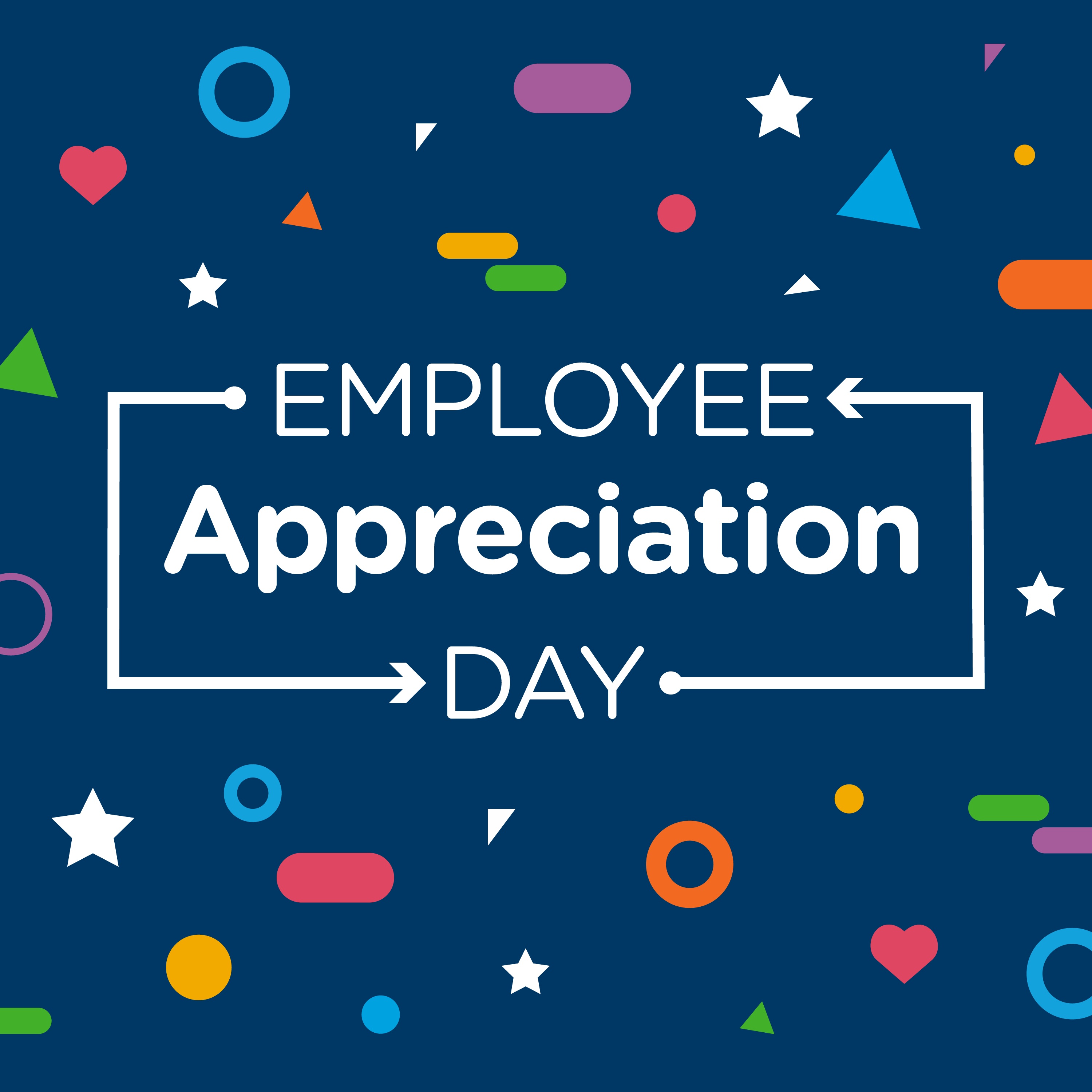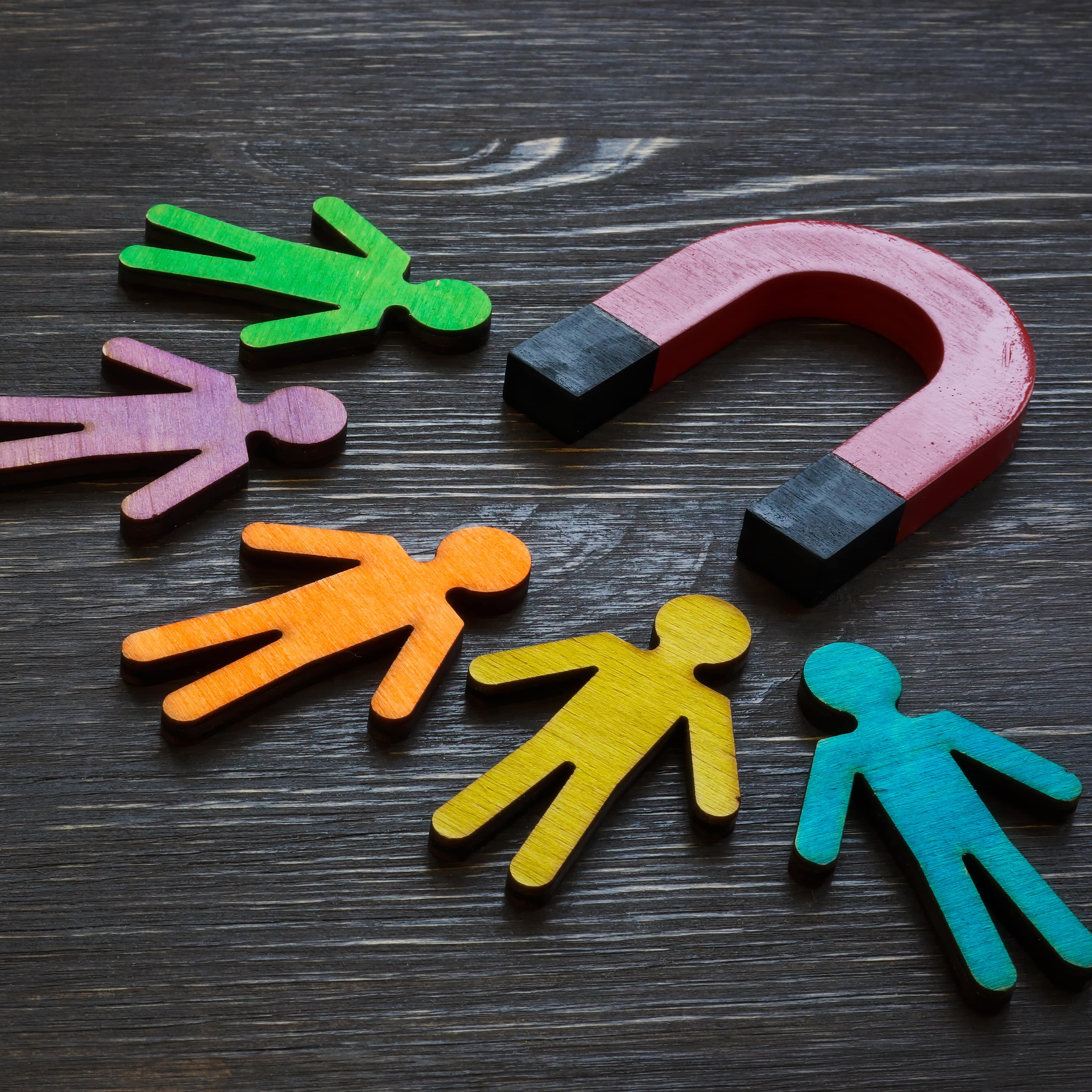An employee recognition programme is one of the easiest ways to show appreciation for your team and build a sense of connection between your employees and their work. In this blog we’ll explain exactly what an employee recognition programme is, why having one is so important, and how to launch a programme that makes a real and tangible difference for your organisation.
What is an employee recognition programme?
An employee recognition programme is a system which allows people in your organisation to recognise each other for their work. This could be for a massive achievement like winning a new client, a length-of-service recognition such as a 10 or 20-year milestone, a sign of appreciation for some particularly strong work or something else entirely.
Whatever your team wants to congratulate each other for, workforce recognition programmes make it possible.
Types of employee recognition programmes
There are two main types of employee recognition that your employee recognition programme can deliver:
Manager recognition
This type of recognition is top-down, meaning it takes the form of a manager or another senior member of the business recognising the work of someone more junior to themselves. This is an important part of recognition as it proves that managers are aware of the hard work and achievements of their team.
Peer-to-peer recognition
Unlike manager recognition, peer-to-peer recognition is more about colleagues giving each other kudos, particular if they are on a similar level of seniority. Peer-to-peer recognition is equally important as manager recognition, because it demonstrates to your team that delivering strong work shouldn’t just be about impressing management, but gaining the respect and admiration of their peers as well.
What are the benefits of workplace recognition programmes?
Increased employee morale and motivation
It’s no secret that being recognised for your work is a huge morale booster. While salaried employees are expected to perform every day, a small act of recognition for a job well done, a target hit or a milestone achieved will do a lot to make them feel truly valued.
It works in reverse as well. Your team will appreciate having a way to give kudos to their peers in a more formal way than shouting ‘well done’ across their bank of desks. A workplace recognition programme provides this outlet, letting people feel good that they’ve recognised their colleague’s efforts.
As we’ll explain later in this blog, workplace recognition programmes can also be connected to reward incentives, which will go even further in improving morale.
Improved employee retention rates
Humans aren’t machines, and often it takes more than just pay rises to keep people happy in their current job. People crave recognition of their work and effort, which is why a workplace recognition programme can have such a huge impact on employee satisfaction.
Employees who are satisfied that they’re being noticed and appreciated – whether by managers or peers – are more likely to stay in their current company rather than jump ship and possibly land in an organisation where they just become another unrecognised cog in the machine.
In fact, our research shows that one in three employees say that recognition and reward is a must-have from a potential new employer.
Improved culture
Your workforce should think of themselves as a team. Of course there can be a bit of friendly rivalry, but everyone should be supporting each other and celebrating their colleagues achievements.
The easiest way to make this possible is by bringing in a workforce recognition programme. Allowing your team to recognise and congratulate each other for their achievements will quickly improve your workplace culture, fostering an environment of internal celebration and gratitude. This will naturally be followed with…
Improved team cohesion and collaboration
Feedback is one of the most important aspects of a strong working team. As we’ve mentioned, positive feedback improves morale in the workplace, but it’s also crucial in terms of building a cohesive team. With regular recognition through an employee recognition programme your employees will quickly learn what sort of work benefits their team and the wider organisation.
Through this the programme will also naturally lead to better collaboration in your workforce. Employees will see what sort of results are appreciated by both their peers and managers, and collectively aim to deliver this kind of work moving forward. No longer will your team have to wonder in silence about whether something was well-received, as they’ll now get recognition in real-time!
8 steps to create a successful employee recognition programme
-
Define the programme’s goals
Before you bring in your employee recognition programme, you need to be clear on what exactly your goals behind it are. Are you hoping to improve office morale by promoting workplace recognition? Help with employee retention? Or are you trying to develop your company culture into one that notices and celebrates achievements?
These are things you need to consider as it will help determine how you promote your employee recognition programme.
-
Understand what motivates your employees
As is the case with any new internal system you use, you want to make sure your entire workforce uses it and sees the value in it. So make sure you understand what motivates your employees. For example, if your team responds well to detailed feedback then make sure the programme allows for long, detail-oriented comments about the work being recognised.
Some organisations find success in using their employee recognition programme as part of a larger recognition strategy. If your employees respond well to the pageantry of an awards ceremony, at the end of every month you could hold an informal company-wide event where the employee with the most recognition gets a small prize.
-
Choose methods for recognition
 One of the best aspects about workforce recognition programmes is that you can tailor them to your exact needs. If you’re looking for a quick and easy interface, your programme’s functionality could be as simple as letting employees give each other a ‘like’ or ‘kudos’ when they want to show appreciation for one another. This method works particularly well as it mirrors social media, making it fast and fun for your team to use.
One of the best aspects about workforce recognition programmes is that you can tailor them to your exact needs. If you’re looking for a quick and easy interface, your programme’s functionality could be as simple as letting employees give each other a ‘like’ or ‘kudos’ when they want to show appreciation for one another. This method works particularly well as it mirrors social media, making it fast and fun for your team to use.
Alternatively, your programme could require that recognition is given in the form of comments, allowing people to write a short paragraph on exactly what they appreciate about their teammate’s actions or behaviours.
Another option is to set a limit on monthly recognition. If each employee can only give out five ‘tokens’ of recognition per month, they’ll think carefully about who they give these tokens out to, adding an extra cerebral step to the process.
This is also the time to think about how the employee receiving the recognition is notified. Some employee recognition platforms use features such as users receiving an eCard when they’re recognised, adding an extra element of colour and fun to the process.
-
Set up a platform to manage recognition
This may be the most important step in the process. You need to carefully select the right platform for your employee recognition programme that has the features you want while also being engaging and easy to use for your employees.
Reward Gateway provides an employee reward and recognition platform that offers an incredible one-stop avenue for recognising and appreciating your employees’ performances. Whether it’s through on-the-spot manager rewards or nearly-endless redemption options, our platform helps celebrate daily success while boosting connections and visibility.
You can book a demo of the platform today and see how easy it is to elevate the employee reward and recognition process in your organisation.
-
Communicate with managers and employees
Now that you’ve figured out your employee recognition programme’s goals and picked the perfect platform, it’s time to tell your team about it!
This programme has the possibility to completely change your company culture and the way your team interacts with each other, so be sure to shout about it loudly.
Don’t just rely on a company-wide email and a post on your intranet, put a meeting in everyone’s diaries and turn it into a bit of an announcement. Explain that this is a chance for your workforce to truly recognise the people and achievements that might have been overlooked in the past. And of course, if there’s any sort of reward attached to recognition, remember to tell everyone about it – the incentive will go a long way to getting people to use the platform.
-
Collect feedback on the programme
 Like every workplace initiative you introduce, it’s important to see how your team is responding to your workforce recognition programme. Be sure to collect feedback on your platform to see how it’s being received and what difference it’s making to your employees and company culture.
Like every workplace initiative you introduce, it’s important to see how your team is responding to your workforce recognition programme. Be sure to collect feedback on your platform to see how it’s being received and what difference it’s making to your employees and company culture.
This can be done informally by speaking to people at their desks about their experience with the platform, or you might want to make things a bit more official and send out a survey asking staff for their feedback on the programme so far.
This step is vital, particularly after the initial launch, as it will allow you to identify and fix any issues that might impact the take-up by your team.
-
Measure impact and effectiveness
With a Reward Gateway platform, you can view the impact of recognition within your organisation. Analytics tools allow you to see how many eCards are sent, how many Rewards have been given and how acts of recognition have flowed between your teams.
It’s important to pay attention to this data as it will allow you to measure the effectiveness of your employee recognition programme. Keep an eye out for changes in the data, such as a drop off in usage a few weeks after the launch – this might indicate that the platform set-up isn’t meeting your employees’ needs so needs to be re-worked.
-
Revisit regularly
An employee recognition programme should be a central part of your employee engagement strategy, and therefore should regularly be analysed and re-evaluated to make sure it’s making a positive impact on your workforce.
There might be small tweaks you can make to improve the platform’s take-up within your workforce, such as making the interface easier to use or suggesting people download the app version of the platform (if there is one).
Or maybe you’ve carried out a survey and noticed that people have requested more of a ‘reward’ feature to the recognition? You could solve this by bringing in a rule that says people who gain a certain amount of recognition each month receive a voucher for their favourite shop.
To keep your employees engaged and make sure your recognition programme is working for them you need to be maintaining it just as you would with any external-facing campaign or strategy.
Examples of successful workplace recognition programmes
Charles Tyrwhitt re-engages their workforce
.jpg?width=309&height=400&name=2019_Charles%20Tyrwhitt%20_Tablet%20Mockup_UK%20(1).jpg) We worked with menswear retailer Charles Tyrwhitt to help them in engaging their dispersed workforce, made up of many part-time and frontline workers.
We worked with menswear retailer Charles Tyrwhitt to help them in engaging their dispersed workforce, made up of many part-time and frontline workers.
Along with Reward Gateway they created The Link – a one-stop-shop platform for employee discounts, wellbeing resources and communications – Charles Tyrwhitt were able to reverse this trend and turn their workforce into a highly-engaged group who felt a new sense of community with the organisation.
Through this rewards scheme staff at the retailer spent more than £100,000 in rewards in a single year, proving conclusively that they had chosen the right model to connect with their employees.
Read our full case study to find out more.
Heineken expand their recognition
Popular beer producer Heineken realised that less than 2% of its staff was being formally recognised each year. Recognising this as a problem, they decided to work with Reward Gateway to solve it.
With our help they worked to rebrand and repackage their employee recognition programme, creating a seamless user journey and adding a diverse range of awards that encourage values-led behaviour, leading to a 50% increase in the number of employees being recognised by their peers.
Discover the full Heineken story in our case study library.

 Charlotte Neal
Charlotte Neal




